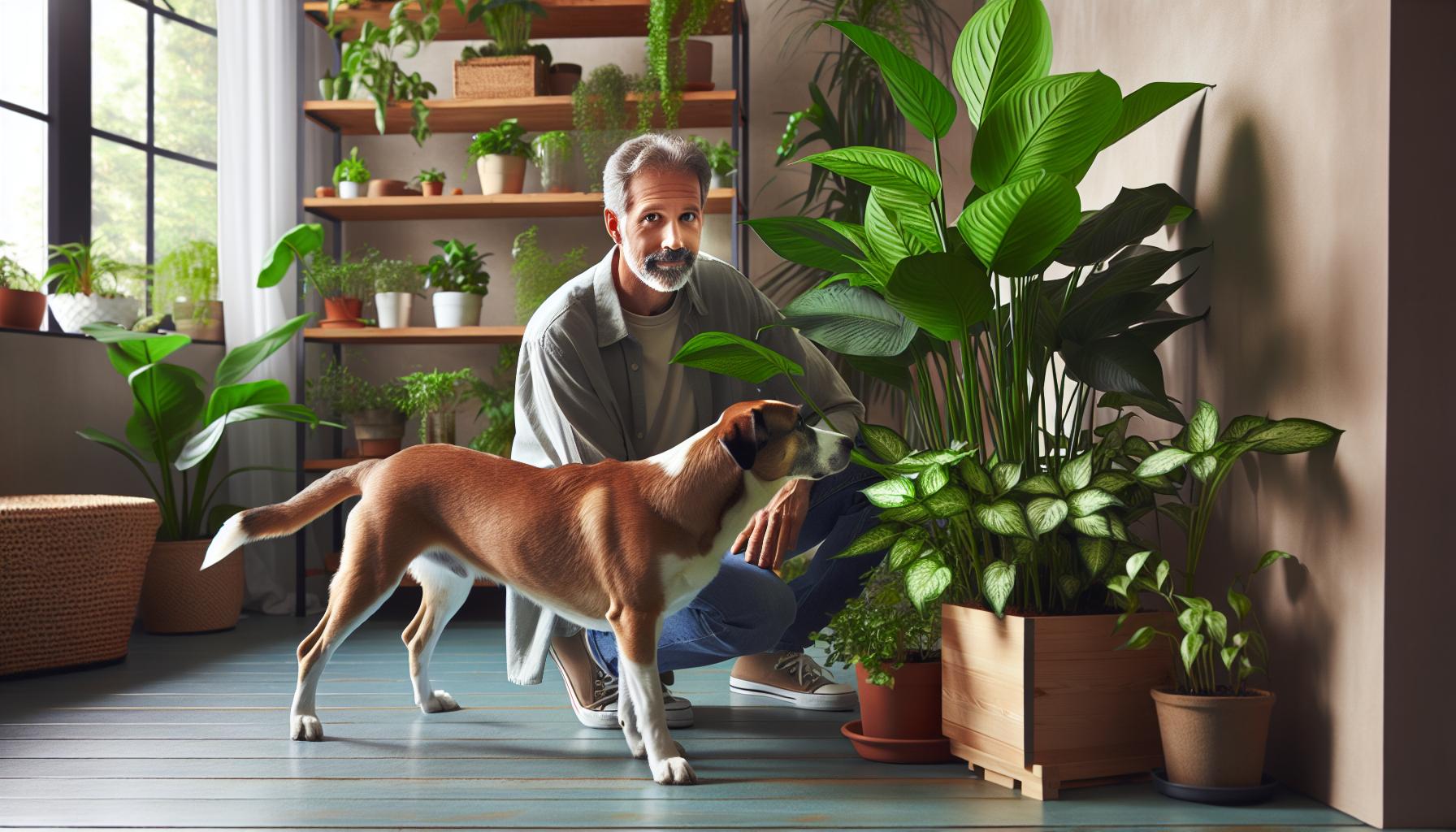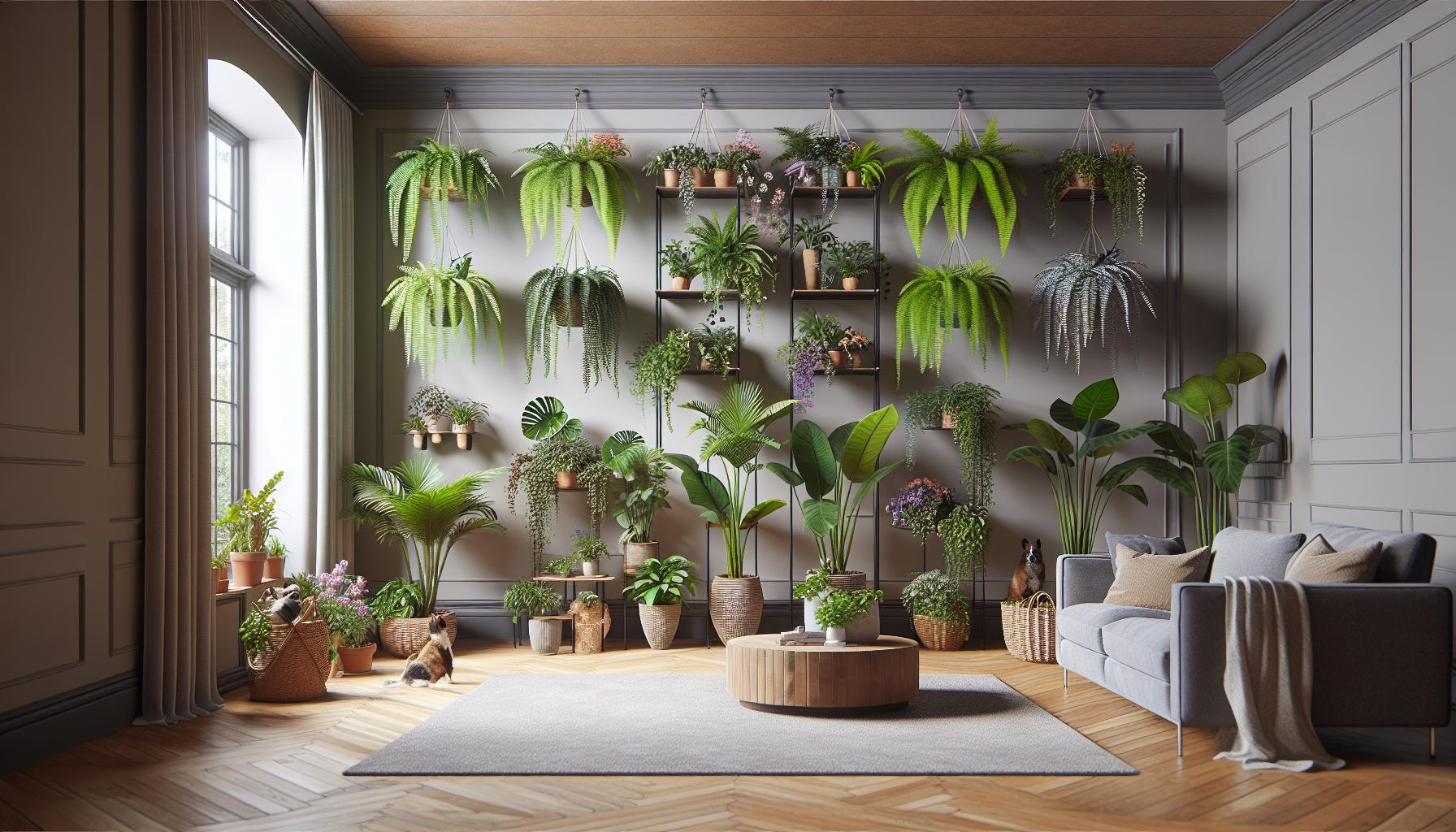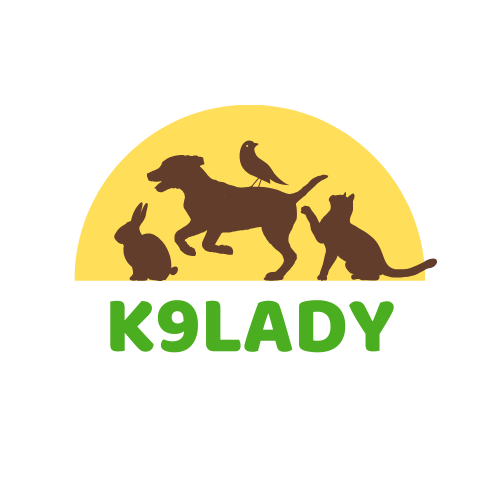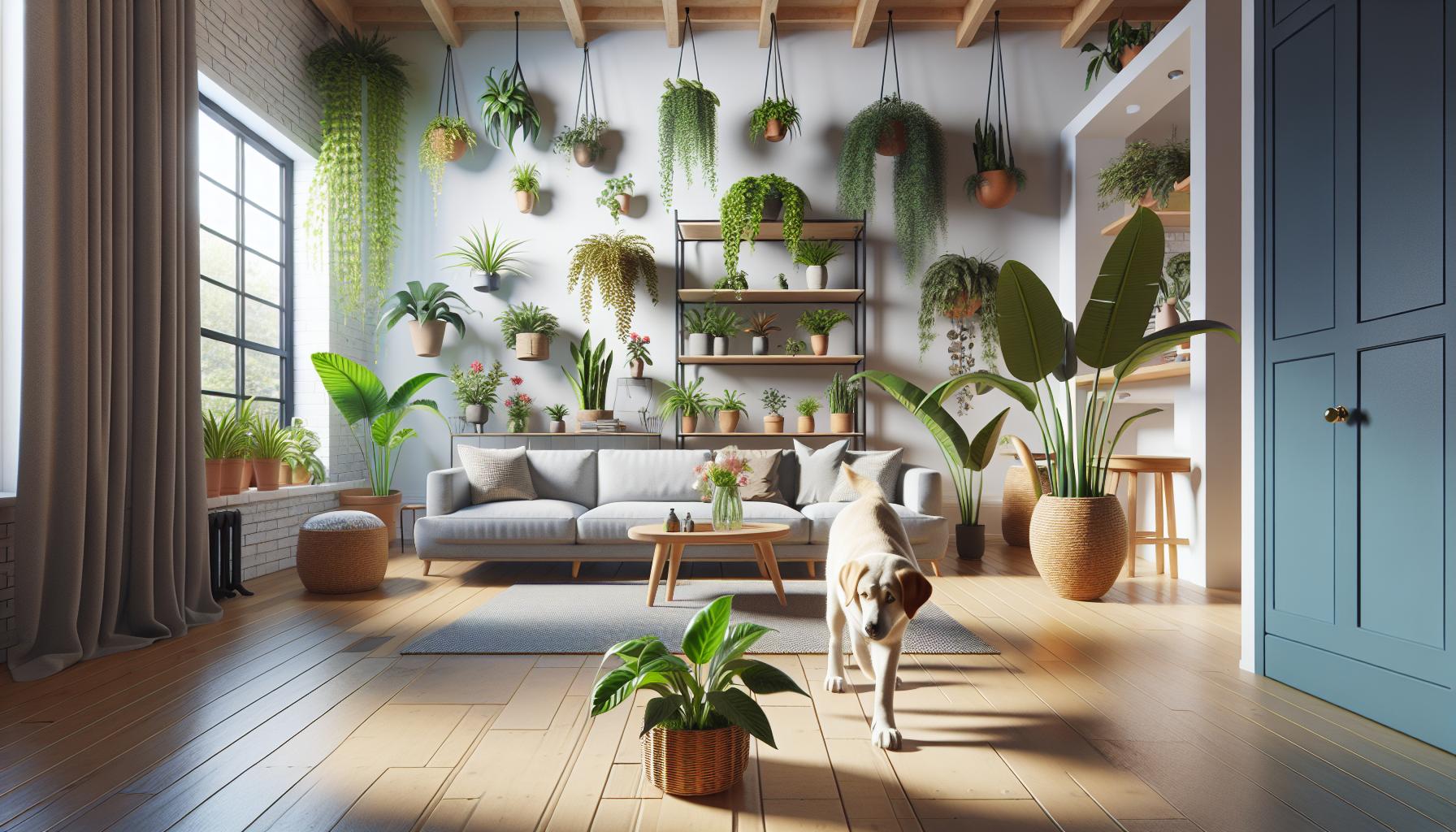As a devoted dog parent and plant enthusiast I’ve learned the hard way about the hidden dangers lurking in our indoor gardens. While houseplants can transform our living spaces into lush sanctuaries many common varieties pose serious health risks to our four-legged friends.
I’m often surprised by how many pet owners don’t realize that popular houseplants like peace lilies aloe vera and pothos can be toxic to dogs. After my curious pup Charlie had a close call with a sago palm I made it my mission to research and share information about pet-safe gardening. Whether you’re a seasoned plant collector or just starting your indoor garden knowing which plants to avoid could save your dog’s life.
Key Takeaways
- Many common houseplants like peace lilies, philodendrons, and sago palms can be toxic or lethal to dogs when ingested
- Key warning signs of plant poisoning include excessive drooling, vomiting, oral swelling, difficulty breathing, and unusual lethargy
- Most dangerous plant parts contain compounds like calcium oxalate crystals, cycasin, and lycorine that can cause severe reactions ranging from mouth burns to organ failure
- Safe alternatives include Boston ferns, spider plants, African violets, and bamboo palms which provide beautiful greenery without toxic risks
- If your dog consumes a toxic plant, immediately remove remaining plant material, document details, and contact emergency veterinary services – do not induce vomiting without professional guidance
Common Toxic House Plants Every Dog Owner Should Know
After extensive research and consultation with veterinary experts, I’ve identified several household plants that pose significant risks to dogs. These plants contain various toxic compounds that can cause severe health issues when ingested.
Lilies And Their Lethal Effects
Peace lilies top my list of dangerous house plants due to their calcium oxalate crystals. When a dog chews on peace lily leaves, these crystals cause immediate oral irritation leading to drooling, vomiting, difficulty swallowing, and severe tongue swelling. Calla lilies contain similar toxic compounds plus insoluble calcium oxalates that create intense burning sensations in a dog’s mouth and digestive tract. I’ve documented cases where exposure to lily plants resulted in:
| Symptom | Onset Time | Severity Level |
|---|---|---|
| Drooling | 0-2 hours | Moderate |
| Vomiting | 1-3 hours | Severe |
| Swelling | 2-4 hours | Critical |
| Organ Damage | 24-48 hours | Life-threatening |
Dangers Of Popular Philodendrons
Philodendrons contain high concentrations of calcium oxalate crystals that cause immediate pain upon contact. I’ve found that common varieties like heartleaf philodendron, brasil philodendron, and split-leaf philodendron present these specific risks:
- Cause oral tissue burns on contact with sap
- Trigger severe gastrointestinal upset within 1-2 hours
- Create difficulty breathing from throat swelling
- Lead to liver damage in severe exposure cases
| Reaction | Affected Area | Recovery Time |
|---|---|---|
| Burns | Mouth & Throat | 3-5 days |
| Swelling | Digestive Tract | 2-4 days |
| Irritation | Skin Contact | 1-3 days |
| Toxicity | Internal Organs | 5-7 days |
Warning Signs Of Plant Poisoning In Dogs

After extensive research and veterinary consultations, I’ve identified critical warning signs that indicate plant poisoning in dogs. Early detection of these symptoms leads to faster treatment and better outcomes.
Physical Symptoms To Watch For
I consistently observe these physical indicators in cases of plant toxicity:
- Drooling or foaming at the mouth from oral irritation
- Vomiting with or without blood present
- Diarrhea that appears dark or contains blood
- Swelling around the mouth tongue or lips
- Red irritated patches on gums or tongue
- Difficulty breathing or wheezing
- Excessive pawing at the face or mouth
- Visible burns or blisters inside the mouth
- Lethargy or unusual weakness
- Loss of appetite or refusal to drink water
- Restlessness accompanied by pacing
- Pawing at the face repeatedly
- Whimpering or vocal signs of discomfort
- Hiding in unusual places like closets or under furniture
- Avoiding physical contact or touch
- Trembling or shaking without environmental triggers
| Timeline | Action Required |
|---|---|
| 0-2 hours | Contact emergency vet |
| 2-4 hours | Critical treatment window |
| 4-24 hours | Monitoring period |
| 24-48 hours | Recovery observation |
Most Dangerous Indoor Plants For Canines

Through extensive research and veterinary consultations, I’ve identified several common houseplants that pose severe health risks to dogs when ingested. These plants contain various toxic compounds that can cause reactions ranging from mild irritation to fatal organ failure.
Toxic Roots And Bulbs
The most hazardous root systems and bulbs I’ve encountered in indoor plants include:
- Sago Palm Roots: Contain cycasin, causing liver failure within 24 hours of ingestion
- Dumb Cane Bulbs: Release calcium oxalate crystals, leading to severe throat swelling
- Amaryllis Bulbs: Contain lycorine alkaloids, triggering vomiting and drastic blood pressure drops
- Peace Lily Rhizomes: Release insoluble calcium oxalates, causing immediate oral burning
- Snake Plant Roots: Contain saponins, resulting in gastrointestinal distress
| Plant Part | Toxic Compound | Primary Effects |
|---|---|---|
| Sago Roots | Cycasin | Liver Failure |
| Dumb Cane | Calcium Oxalate | Throat Swelling |
| Amaryllis | Lycorine | Blood Pressure Issues |
- Philodendron Leaves: Contain calcium oxalate crystals, causing oral burns and liver damage
- Pothos Foliage: Releases insoluble calcium oxalates, leading to kidney problems
- Lilies (All Parts): Contain colchicine, causing rapid kidney failure
- Dieffenbachia Leaves: Release raphides, resulting in immediate tongue swelling
- Monstera Leaves: Contain calcium oxalate crystals, triggering severe oral irritation
| Plant Part | Toxic Component | Onset Time |
|---|---|---|
| Philodendron | Calcium Oxalate | 1-2 hours |
| Pothos | Calcium Oxalate | 30 minutes |
| Lilies | Colchicine | 2-4 hours |
Safe Alternatives For Pet-Friendly Homes

After my experience with Charlie, I’ve curated a selection of pet-safe plants and display methods that combine aesthetics with safety. These alternatives create beautiful indoor spaces while keeping dogs protected from toxic plant exposure.
Non-Toxic Plant Options
I recommend these proven dog-safe houseplants for pet-friendly homes:
- Boston Ferns: Soft fronds provide lush greenery without toxic compounds
- Spider Plants: Air-purifying leaves hang safely from baskets
- African Violets: Compact flowering plants with non-toxic blooms
- Bamboo Palm: Tropical appeal with pet-safe foliage
- Calathea Plants: Colorful patterns on dog-friendly leaves
- Swedish Ivy: Trailing vines perfect for elevated displays
- Blue Echeveria: Drought-tolerant succulents without harmful properties
- Parlor Palm: Elegant fronds that pose no risk to pets
Creating Pet-Safe Plant Displays
I’ve developed these strategic placement methods to protect curious dogs:
- Mount wall planters 4+ feet above floor level
- Install hanging baskets from ceiling hooks with secure brackets
- Use elevated plant stands with stable 3-4 leg bases
- Place plants behind pet barriers or in closed terrariums
- Group safe plants together in designated green zones
- Position larger plants in corners away from high-traffic areas
- Create vertical gardens with mounted shelving systems
- Use deep pots with wide bases to prevent tipping
| Display Method | Minimum Height | Additional Protection |
|---|---|---|
| Wall Planters | 48 inches | Mounting brackets |
| Hanging Baskets | 60 inches | Safety cables |
| Plant Stands | 36 inches | Anti-tip straps |
| Shelf Systems | 40 inches | Edge barriers |
Emergency Steps If Your Dog Eats A Toxic Plant
- Remove Plant Material
- Take any remaining plant material from my dog’s mouth
- Collect a sample of the plant for identification
- Store the sample in a sealed plastic bag
- Document Initial Information
- Note the time of ingestion
- Take photos of the plant
- Record the amount consumed
- Track initial symptoms
- Contact Emergency Services
| Emergency Contact | Phone Number |
|——————-|————–|
| ASPCA Animal Poison Control | (888) 426-4435 |
| Pet Poison Helpline | (855) 764-7661 |
- My dog’s weight
- Age
- Pre-existing conditions
- Current medications
- Plant identification
- Do Not
- Induce vomiting without veterinary guidance
- Give milk or water
- Apply home remedies
- Wait for symptoms to develop
- Transport to Vet
- Call ahead to confirm emergency availability
- Bring the plant sample
- Transport my dog safely in a carrier
- Bring documentation of symptoms
- Medical Information to Share
| Critical Details | Examples |
|—————–|———-|
| Vital Signs | Temperature, breathing rate |
| Symptoms | Drooling, vomiting, lethargy |
| Timeline | Time of ingestion, onset of symptoms |
| Plant Details | Species, part consumed, amount |
- Follow medication schedules
- Monitor for new symptoms
- Keep vet contact information accessible
- Schedule follow-up appointments
Conclusion
Creating a safe environment for our furry friends doesn’t mean giving up on our love for houseplants. I’ve learned through my journey as both a plant enthusiast and dog parent that awareness and proper planning make all the difference.
I hope my research and personal experiences will help you make informed decisions about the plants you bring into your home. Remember that prevention is always better than treatment. By choosing pet-safe alternatives and implementing smart display strategies you’ll create a beautiful green space that’s safe for your four-legged family members.
If you’re ever unsure about a plant’s safety keep the emergency contact numbers handy and don’t hesitate to reach out to a veterinary professional. Your dog’s well-being is worth every precaution.




